Imagine a heavy rainstorm. The streets flood, and water rushes over sidewalks. What if there was a way to stop this messy problem? Meet rain gardens. These special gardens are more than just pretty flowers and plants. They help manage stormwater effectively.
Rain gardens soak up rainwater from roofs, driveways, and streets. They act like sponges, reducing flooding in our neighborhoods. Did you know that a rain garden can filter dirty water, too? They catch rain, clean it, and slowly release it into the ground. This makes our streams and rivers cleaner.
So, why haven’t we seen more rain gardens? Perhaps it’s time to explore how they can change our towns and cities. Join us as we discover the benefits and beauty of rain gardens for stormwater management. You might just want to plant one in your yard!
Rain Gardens For Stormwater Management: An Eco-Friendly Solution

Rain Gardens for Stormwater Management
Rain gardens are special gardens that help manage stormwater. They collect rainwater from streets and rooftops. Instead of the water running off and causing floods, it soaks into the ground. Isn’t that clever? These gardens use native plants, which attract butterflies and birds. Not only do they look beautiful, but they also clean the water as it passes through the soil. By planting a rain garden, you can make a difference in your community and help the planet too!What is a Rain Garden?
Definition and purpose of rain gardens. Key components and design elements.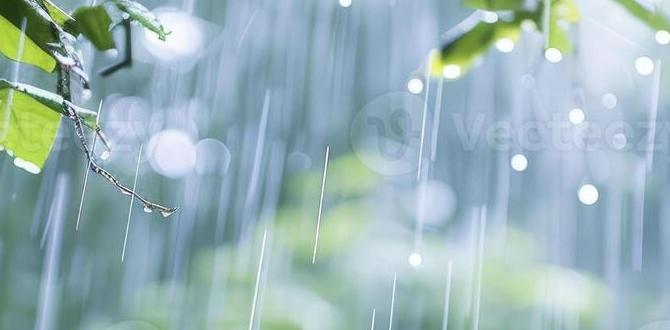
Imagine a garden that not only looks pretty but also helps keep our water clean! A rain garden is a special type of garden designed to catch rainwater. This water then soaks into the soil instead of flooding the streets. Think of it as a superhero for stormwater management!
Key parts of a rain garden include native plants that love to drink, soil that helps water flow down, and a slight dip to gather water. These gardens are designed to be both beautiful and efficient. You might even say they are the “party planners” for rainwater, keeping it where it should be!
| Component | Purpose |
|---|---|
| Native Plants | Attract pollinators and absorb water. |
| Soil Mix | Allow water to drain and filter pollutants. |
| Shaping | Collect and hold rainwater effectively. |
By creating rain gardens, we can all help our environment. So, next time you see a rain garden, remember—it’s not just a garden, it’s a stormwater superhero!
Benefits of Rain Gardens
Environmental benefits (biodiversity, water quality). Economic advantages (reduced stormwater fees, property value).Rain gardens offer many great benefits. They help the environment and our pockets too. With rain gardens, we can boost biodiversity. They attract birds and butterflies, making nature flourish. They also clean stormwater. This leads to better water quality in our rivers and lakes. Economically, they can lower stormwater fees. Rain gardens can even increase your property value! More green space is always good for homes.
- Enhance local wildlife
- Improve water clarity
- Reduce stormwater costs
- Boost property appeal
Why are rain gardens good for wildlife?
Rain gardens create homes for birds and butterflies. They provide food and shelter, helping nature thrive.
How Rain Gardens Contribute to Stormwater Management
Mechanisms of stormwater absorption and filtration. Comparison with traditional stormwater management methods.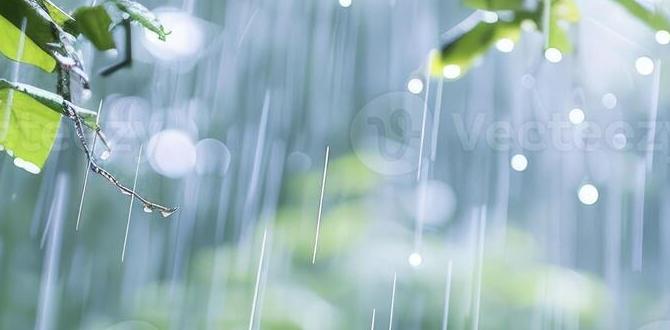
Rain gardens work magic by soaking up stormwater. They act like sponges, filtering water and keeping it from flooding our streets. Instead of letting water run off and cause chaos, these gardens let it soak into the ground. That’s way better than traditional methods, like drainage pipes, which can just push water away. Rain gardens also help clean the water, removing dirt and harmful stuff.
| Feature | Rain Gardens | Traditional Methods |
|---|---|---|
| Water Absorption | High | Low |
| Filtration | Effective | Minimal |
| Flood Control | Excellent | Limited |
So, not only do rain gardens help manage water, they also do it with style! Imagine a garden that’s not only pretty but also saves the day when it rains! Talk about multitasking!
Designing an Effective Rain Garden
Site selection and planning considerations. Plant selection for optimal performance.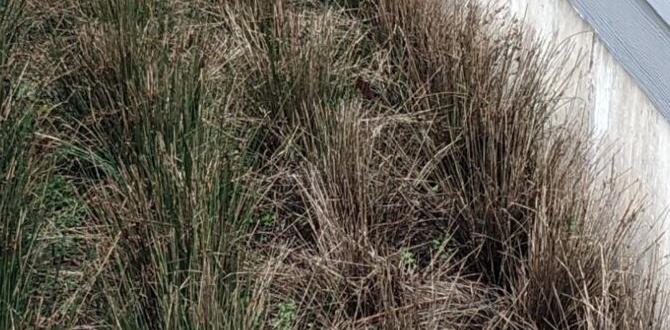
Choosing the right spot for your rain garden is like finding the perfect place to hide candy—important and fun! Look for a flat area that collects rainwater, but not too low. Once you find your spot, plan for plants that love water and will help soak it all up. These green friends include native species that thrive in local conditions. Remember, a happy rain garden is like a well-fed pet; it needs the right ingredients! Here’s a quick table to help you choose:
| Plant Type | Water Needs | Best For |
|---|---|---|
| Blue Flag Iris | Wet | Attracting butterflies |
| Joe-Pye Weed | Moderate | Pollinator friendly |
| Switchgrass | Drought-tolerant | Soil stability |
Selecting the right plants can turn your rain garden into a wildlife oasis while managing stormwater like a pro. So gear up and let your creativity flow!
Maintenance of Rain Gardens
Regular care and management practices. Common issues and troubleshooting.
Rain gardens need regular care to stay healthy. Trimming plants and pulling weeds helps them grow best. Watering during dry spells is also important. Sometimes, plants may not thrive due to pests or diseases. Check for yellow leaves or bugs. To fix common problems:
- Remove dead plants.
- Use mulch to stop weeds.
- Make sure water drains well.
With these simple steps, your rain garden can be beautiful and functional!
What are the common problems in rain gardens?
Some common problems include poor drainage and pest issues. These can make plants sick or cause flooding. Regular checks can help spot these issues early.
Case Studies of Successful Rain Gardens
Examples from urban and rural settings. Analysis of performance and lessons learned.
Many cities and farms show how rain gardens can work wonders. In Seattle, a rain garden cut stormwater runoff by 60%. That’s almost like removing an elephant from a small boat! Meanwhile, in rural Michigan, farmers saw fewer floods after planting rain gardens. They learned to choose the right plants, which made a big difference. Lessons from these places remind us of the power of nature. If we work together, we can make our towns and fields greener while having some fun!
| Location | Benefit | Key Lesson |
|---|---|---|
| Seattle | 60% stormwater reduction | Choose plants wisely |
| Michigan | Fewer floods | Teamwork helps! |
Implementing Rain Gardens in Your Community
Steps to advocate for rain garden projects. Collaborations with local governments and organizations.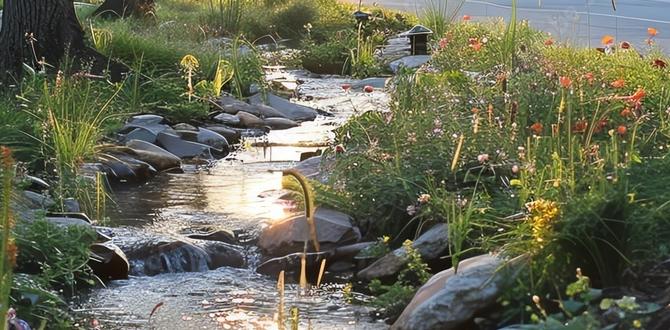
Want to bring rain gardens to your community? Start by sharing the benefits with your neighbors. Explain how they help control stormwater and improve local beauty. Next, team up with local groups. They can help spread the word!
- Meet with community leaders to gain support.
- Organize events to teach people about rain gardens.
- Work with schools to involve students in projects.
These steps can make a big difference. Together, you can create a greener, cleaner space for everyone.
How can I support rain garden projects?
To support rain garden projects, share information within your community. Engage with local authorities and organizations to build partnerships. Collaboration is key to making these gardens a reality!
Resources and Tools for Creating Rain Gardens
Recommended guides and websites. Tools and services for design and planting.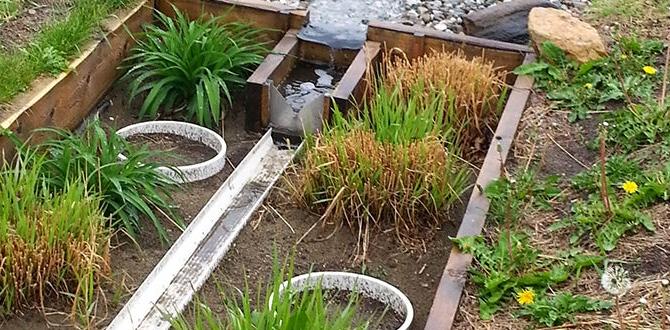
Creating a rain garden can be exciting, and you don’t have to do it alone! Many resources are available to help you out. For instance, websites like EPA provide amazing guides on design and planting. Local gardening centers often offer tools and services too. Want to dig in? Check out this handy table below for quick references!
| Resource | Description |
|---|---|
| NCSU Extension | Guides for rain garden design. |
| Rain Network | Community support and ideas. |
| Local Garden Centers | Hands-on tools and expert tips! |
So grab your shovel and let’s have some fun while helping the planet! A rain garden not only looks cool but also helps with stormwater. \*Bye-bye puddles, hello rain garden!\*
Conclusion
In conclusion, rain gardens are great for managing stormwater. They soak up rain and help prevent flooding. You can create one in your yard to support wildlife and keep water clean. We can all help our environment a little at a time. Explore more about rain gardens and consider starting your own. It’s a fun way to make a difference!FAQs
What Are The Key Benefits Of Incorporating Rain Gardens Into Urban Landscapes For Stormwater Management?Rain gardens are great for cities because they help soak up rainwater. This keeps streets from flooding when it rains. They also make our neighborhoods look pretty by adding plants and flowers. Rain gardens help clean the water by trapping dirt and pollution. Plus, they provide a home for birds and bugs!
How Can Rain Gardens Be Designed To Effectively Capture And Filter Runoff From Impervious Surfaces Such As Driveways And Roofs?You can design rain gardens to catch and clean water by digging a shallow area in your yard. Fill it with plants and special soil that helps filter water. Make sure it’s near driveways and roofs where water usually flows. Add small rocks at the bottom to help with drainage. This way, the rainwater will be cleaner when it goes back to the ground.
What Types Of Native Plants Are Best Suited For Rain Gardens And Why Are They Important For Successful Stormwater Management?For rain gardens, it’s best to choose native plants like coneflowers, black-eyed Susans, and ferns. These plants grow well in wet and dry spots. They help soak up rainwater and reduce flooding. Plus, they attract butterflies and bees, making nature happier. Using native plants is good for managing stormwater and keeping our environment healthy!
What Maintenance Practices Are Necessary To Ensure The Long-Term Functionality And Health Of A Rain Garden?To keep a rain garden healthy, we need to check it often. First, we should pull out weeds so they don’t take over the plants. Next, we should make sure the plants get enough water, especially in dry weather. It’s also important to clean out any trash and leaves to keep water flowing well. Finally, we can replace any dead plants to keep the garden looking nice and working properly.
How Do Rain Gardens Compare To Traditional Stormwater Management Techniques, Such As Retention Ponds And Drainage Systems, In Terms Of Effectiveness And Environmental Impact?Rain gardens and traditional stormwater methods like retention ponds work differently to handle rainwater. Rain gardens soak up water and help plants grow. They also clean the water before it goes back into rivers. On the other hand, retention ponds and drainage systems can sometimes flood and harm local wildlife. Overall, rain gardens are better for the environment and can be more effective in keeping water clean.
{“@context”:”https://schema.org”,”@type”: “FAQPage”,”mainEntity”:[{“@type”: “Question”,”name”: “What Are The Key Benefits Of Incorporating Rain Gardens Into Urban Landscapes For Stormwater Management? “,”acceptedAnswer”: {“@type”: “Answer”,”text”: “Rain gardens are great for cities because they help soak up rainwater. This keeps streets from flooding when it rains. They also make our neighborhoods look pretty by adding plants and flowers. Rain gardens help clean the water by trapping dirt and pollution. Plus, they provide a home for birds and bugs!”}},{“@type”: “Question”,”name”: “How Can Rain Gardens Be Designed To Effectively Capture And Filter Runoff From Impervious Surfaces Such As Driveways And Roofs? “,”acceptedAnswer”: {“@type”: “Answer”,”text”: “You can design rain gardens to catch and clean water by digging a shallow area in your yard. Fill it with plants and special soil that helps filter water. Make sure it’s near driveways and roofs where water usually flows. Add small rocks at the bottom to help with drainage. This way, the rainwater will be cleaner when it goes back to the ground.”}},{“@type”: “Question”,”name”: “What Types Of Native Plants Are Best Suited For Rain Gardens And Why Are They Important For Successful Stormwater Management? “,”acceptedAnswer”: {“@type”: “Answer”,”text”: “For rain gardens, it’s best to choose native plants like coneflowers, black-eyed Susans, and ferns. These plants grow well in wet and dry spots. They help soak up rainwater and reduce flooding. Plus, they attract butterflies and bees, making nature happier. Using native plants is good for managing stormwater and keeping our environment healthy!”}},{“@type”: “Question”,”name”: “What Maintenance Practices Are Necessary To Ensure The Long-Term Functionality And Health Of A Rain Garden? “,”acceptedAnswer”: {“@type”: “Answer”,”text”: “To keep a rain garden healthy, we need to check it often. First, we should pull out weeds so they don’t take over the plants. Next, we should make sure the plants get enough water, especially in dry weather. It’s also important to clean out any trash and leaves to keep water flowing well. Finally, we can replace any dead plants to keep the garden looking nice and working properly.”}},{“@type”: “Question”,”name”: “How Do Rain Gardens Compare To Traditional Stormwater Management Techniques, Such As Retention Ponds And Drainage Systems, In Terms Of Effectiveness And Environmental Impact? “,”acceptedAnswer”: {“@type”: “Answer”,”text”: “Rain gardens and traditional stormwater methods like retention ponds work differently to handle rainwater. Rain gardens soak up water and help plants grow. They also clean the water before it goes back into rivers. On the other hand, retention ponds and drainage systems can sometimes flood and harm local wildlife. Overall, rain gardens are better for the environment and can be more effective in keeping water clean.”}}]}





